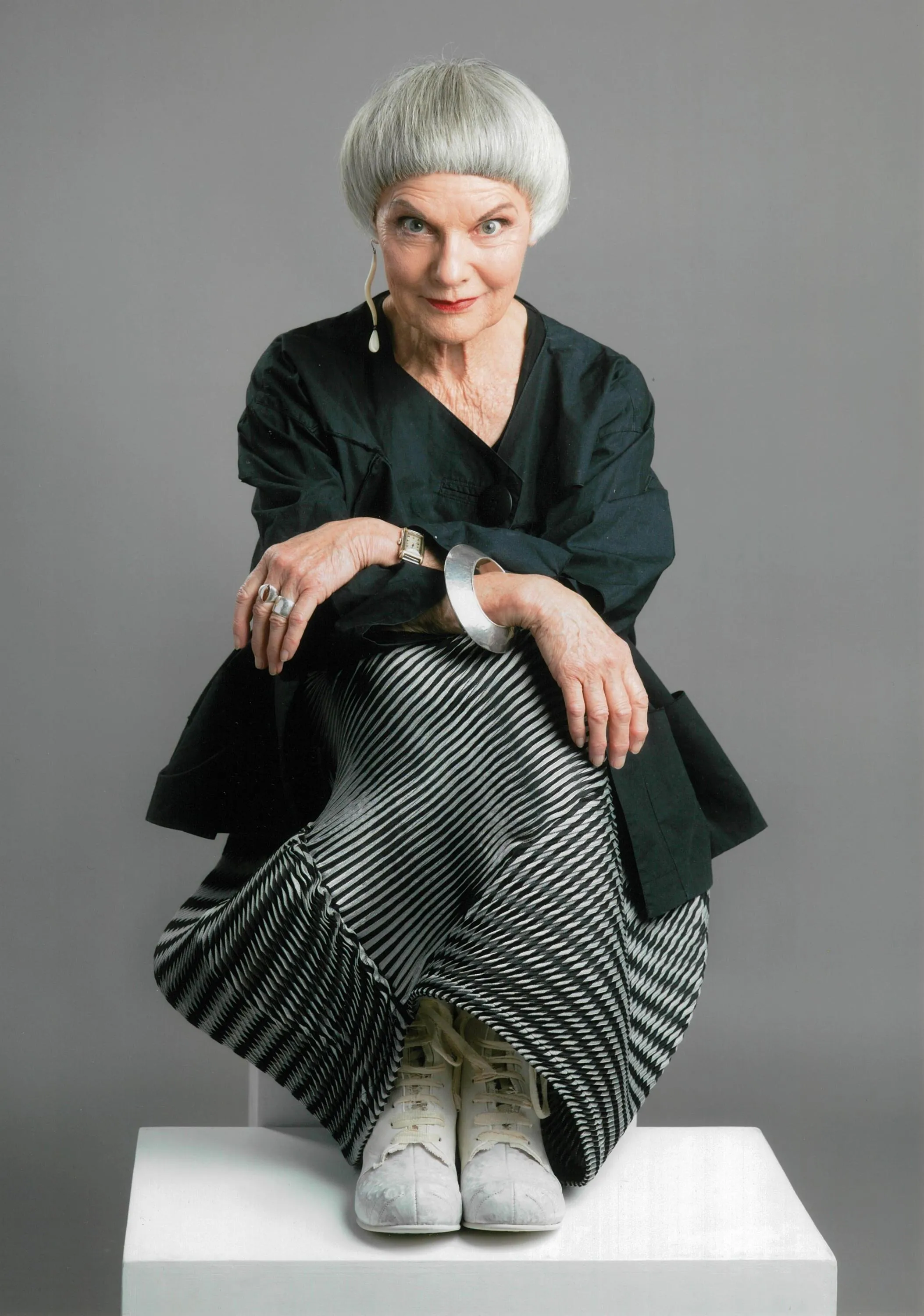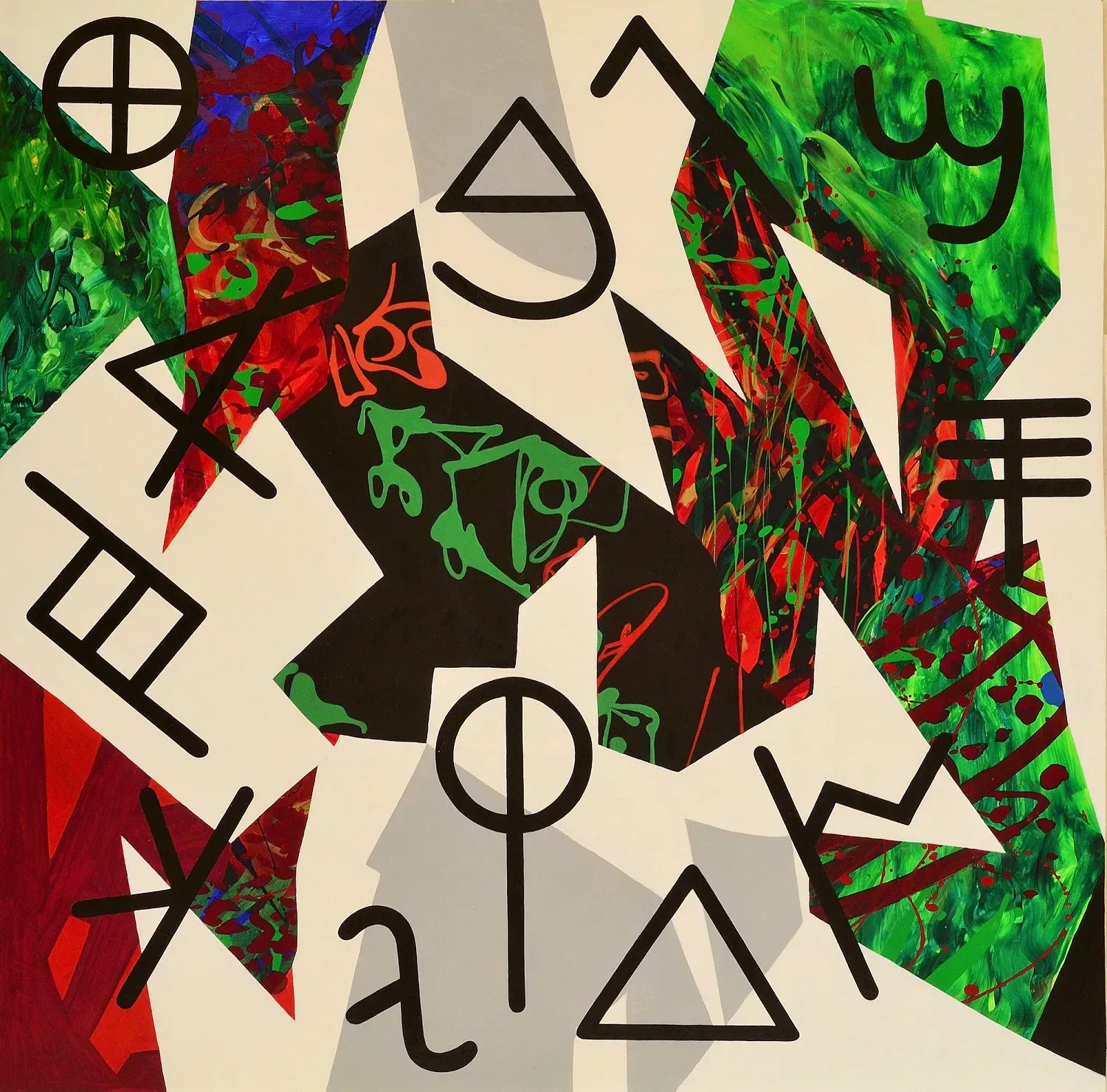Aratoi - Rhondda Greig's Exhibition on Home, Paint and Poem: First there was Phoenician

Rhondda Greig's Exhibition on Home, Paint and Poem
FIRST THERE WAS PHOENICIAN
30 November 2019 – 9 February 2020
Exhibition is open daily, 10am – 4pm, free entry.
In the new exhibition First there was Phoenician, the Carterton-based artist Rhondda Greig explores the notion of home through painted letters and words. She also bridges the space and time between the script of ancient Phoenicia and contemporary living.
“This exhibition is a fine showcase of Rhondda Greig’s skills as both graphic artist and poet,” says Aratoi Director Susanna Shadbolt. “Not many artists work at such a high standard in the two media.”
The artist Rhondda Greig writes, “Poem becomes painting. Painting employs poetry. In works recalling the Phoenician origins of script itself the exhibition expresses the continuity throughout human history of the attempt to transmit the idea through word-meaning, word-shape, the visual sound of the word.”
First there was Phoenician features 18 works created from 2005 to 2019 – paintings, drawings and a large 2-panel self-portrait.
Greig has exhibited internationally, and her work is held in public and private collections in New Zealand and abroad. Her coloured glass-text installation held in the Aratoi collection is currently on view at the Wairarapa Hospital, and her 1981 watercolour Moons was part of the recent 50/Fifty – Fifty years at Aratoi exhibition.
Greig’s many public art projects include for the Ministry of Women’s Affairs, Wellington District Police Headquarters, Wellington Cathedral of St Paul, and Carterton Events Centre.
The artist has also authored several books. Matarawa Cats (1984) is an award-winning children’s classic, and her most recent book, Noa’s Calf (2009), is told entirely in illustrations.
FIRST THERE WAS PHOENICIAN - ARTIST TALK AT ARATOI BY RHONDDA GREIG
DELIVERED ON 23 NOVEMBER 2019, AT THE OPENING OF HER SOLO EXHIBITION
Over the years I have recognised the constant calligraphy elements in my work, and so I decided to explore further where the alphabet came from.
This led me to Phoenicia.
Nearly every civilisation that has devised a system for writing has a legend or story to explain its origin. Alphabets develop gradually over centuries and ours is no different. The real origins of it are buried in the past.
Our alphabet could begin 5000 years ago in Egypt - the hieroglyphics of the Nile dwellers. They were able to create word pictures, object pictures and later idea pictures, but it was the Phoenicians who created symbols for sounds. Unlike other cultures they had no literature as such - they were traders and needed a system to be able to calculate and record commercial transactions. So even though hieroglyphics became increasingly sophisticated, the Egyptians never gave up their symbols for whole words and their pictures for ideas. It is interesting that our alphabet developed because of these business imperatives even though it was founded in Egyptian writing. The great Phoenician city of Tyre became the most successful trading centre on the Mediterranean coast, so its influence was very important in the development of the western world.
The Phoenician original letter forms were handsome and decisive, and I decided to superimpose them on my own handwriting. I have interpreted calligraphy broadly and have not narrowed down to the mastering of any particular system of letter forms like italic or copperplate. Rather I have interpreted it as any letter shape created by hand. This is accepted now in contemporary calligraphy art practice.
But before the Egyptians of 6000 years ago, my research led me back to Paleolithic art of 60,000 years ago with the discovery of cave drawings. There is the story of the Lascaux Cave drawings. In 1940, four boys and their dog were walking in southern France, occupied by the Germans at that time, when the dog disappeared down a hole. The boys decided to climb down the hole, a fifty-foot drop, and find their dog. They not only found their dog but were astounded when they stumbled on the Lascaux Cave drawings. This most bloodied and brutal time in human history gave us the revelation of one of the most sublime art works known to man. It was the same after Altamira was discovered in Spain. The huge scale, the keenly observed details of life, the variety of techniques used, the colours, the vitality of the moving line exhilarated all who saw them. It is said that Picasso, overwhelmed by the power of the image making, proclaimed after emerging from Altamira, never to return to Spain again, that "all art after Altamira is decadent". It is extraordinary that cave art has now been found on every continent except for Antarctica and important research is trying to understand the similarities in the execution of the work by artists living thousands of miles apart and thousands of centuries apart. A global collective consciousness may not be so new.
Lascaux and Altamira led me to the idea of excavating my own creative life to see what experiences led to a developing human being deciding to be an artist. Some years ago, Justin Paton wrote a book called ' How to look at a Painting'. I suggest more books could be written about how to look at an artist's life.
As a 5-year-old at my first school, we had a classroom where the windows were up high. We could not stand and see outside. Our teacher had us sit on the floor cross-legged and look up to those windows. She drew a grid on the blackboard a similar shape to the windows and asked us to tell her what we could see. Then she filled in with chalk her blackboard grid with the patterns of blue sky and white clouds that we described. Some primeval impulse in me was aroused. Every day I was thrilled when we sat down to do this activity. Much later I understood that a known reality, by making marks on a blank surface, can produce another reality that was just as immediate and compelling as the first reality.
Then there was the art lesson, I think in Primer 4. We were all given a piece of black pastel paper and a new box of colour pastels. We had to take a pastel for a walk, find shapes in the walking and colour them in.......a regular activity with young children. The teacher who was called Sally Saunders - you never forget these names - walked around watching us and when she came to my desk, she picked up my work, showed the class and talked about it. I was very surprised. Every other child seemed to have a fine picture and it was not at that age about being the best in the class. Competitiveness grabs us up later. But Sally Saunders was sending me a message that making marks on a surface could have meaning for other people.
That afternoon I knew something else as well. I was conjoined with colour as a condition of existence. We have never been separated. My memory wardrobe has hanging in it the colour of every garment I wore as a child.
Another star lit up through my grandfather. He had survived the war and came back a broken man. But he made his very large back yard into a vegetable garden with a workshop in the middle of it. He was a big, bluff querulous man. He must have realized my interest in drawing, and one day he gave me a piece of wood and said if I drew something on it, he would cut it out on his skill saw. I drew a pansy, he cut it out, and then I painted it. A two-dimensional image became a three-dimensional object, a little piece of sculpture. I may have been about 6 but this all came back to me when I did one of my first public commissions in the police station in Wellington and I cut out wooden shapes with a laser.
Then there was the beguiling experience that many of us knew of learning to print in the primers, the forming of straight ascenders and descenders attached to circles. I still get a frisson of excitement when I see fine foundational hand or roman letters on advertising boards as I walk around the streets.
These seminal experiences, and many others, made me the artist I am. Then as I put this exhibition together, I realised that the way I worked echoed the processes of those ancient artists. There is a blueprint of design awareness in our DNA that percolates through our imaginations. Keen observations that become drawings that become larger paintings that can assume abstract concepts and imagery. Even the way colours are laid down. Those early artists were nomadic and when they visited an already decorated cave, they did not clean the walls and start over again. They worked over the top allowing what was underneath to inform what they were doing. You can see in some of my paintings the mattresses of colour laid down, wiped out with purpose to create texture.
Finally, there is the self-portrait. I came back to New Zealand in 2006 after a year's residency at Aberdeen University. I read an article about the relative status of male and female artists in this country. It would be the same elsewhere. After the international exposure with some success, I had decided I did not want to be an expatriate artist. This research article made clear that on every level, the number of exhibitions in public galleries, publications, awards, grant money for projects men scored far higher than women. Now all else being equal, like being able to draw a perfect circle freehand like Giotto, or have good ideas, this pronouncement was challenging.
The exhibition continues at Aratoi Wairarapa Museum of Art and History through the summer holidays, until 9 February 2020.
Aratoi website, Rhondda Greig website

